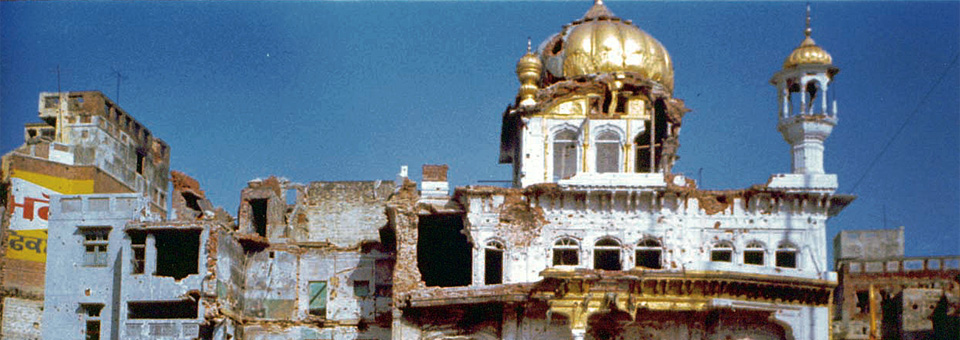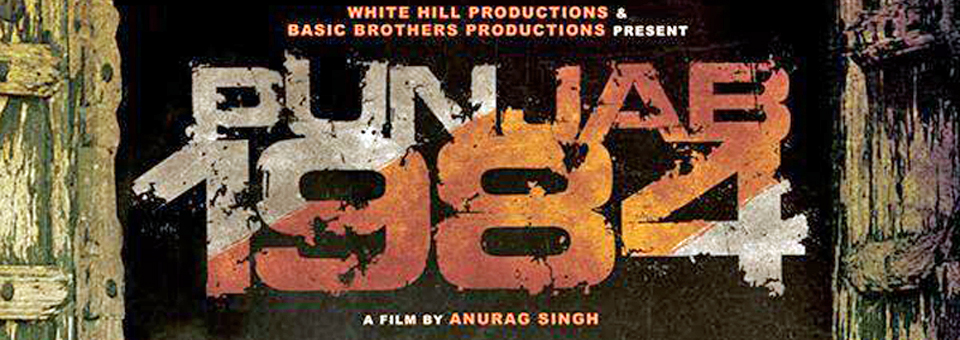30 days from now, it will have been 30 years since the Darbar Sahib at Amritsar was invaded by the Indian Government. The events of 1984 continue to shape the agenda of Sikhs worldwide and although three decades have past, they remain just as relevant today for more reason than the sheer brutality of the military operation, for what gets lost during the narration is that many of the problems which led up to that fateful year still exist today.
I’ve never been fond of celebrating or commemorating anniversaries. I can see the need and benefit of taking a solitary day out of the year to remember a monumentous, or in this case calamitous occasion; we lead such busy lives that it is much easier for most to apportion set times to remember the important moments that have been experienced. But personally I find that taking time out on an anniversary helps me to forget the gravity of such important moments throughout the rest of the year and so I tend to avoid them. That does not mean that I don’t see the bigger picture – mass celebration or commemoration of an event such as the invasion of Amritsar in June 1984 can be a catalyst to share information about the issues involved and ensure that personal accounts of what took place are retained in living memory. However, there is a much more pertinent reason as to why Sikhdom’s mass commemoration of 1984 on a solitary day (or number of days) could be proving to be more harmful than helpful: quite simply because the issues that led up to it are still ongoing.
When the Indian Government invaded the Darbar Sahib, their public relations went into overdrive painting a picture internationally of Sikh separatists barricaded within the confines of Sikhdom’s most sacred place. They, the Army, were being sent in to remove these ‘criminals’ from the vicinity and to bring peace once more to the Indian half of the Punjab. That such drivel was and continues to be published by reputable news agencies who were themselves forcibly removed from the State days before it was put into curfew thus removing independent witnesses to the carnage, is inexcusable. Since the creation of India and Pakistan, Indian-Punjab where the Sikhs had determined to remain, was in constant flux politically and socially. Punjabis were outraged with each passing year as the promises made to them by Jawaharlal Nehru, the Indian National Congress party and wider Hindustani politicians failed to materialise. As time passed, peaceful protest gave way to State-wide strikes, but as these too failed to garner an adequate response, civil disobedience became the only recourse for Punjabis. As this was predominantly Sikh-led, the struggle became synonymous with Sikh issues of inequality in the newly-formed India and when the Dharam Yudh Morcha was launched (Agitation for the Righteous Struggle) the Unitary Indian State made sure they took the opportunity to strike a damning blow at the agitating Sikh psyche. This is the reality behind the invasion of the Darbar Sahib, the physical assassination of the Sikh leader Sant Jarnail Singh Bhindranwale and the parallel occupations of scores of Gurdware and Sikh centres around the sub-continent.
So what were these vital promises that were not kept and how was inequality manifested for civil disobedience to be the only remaining option? The foremost problem was that of India itself. The nation was created to be truly federal under which regional autonomy would be substantive and in the control of individual states. Not only did that not happen, but basic truths such as Constitutional recognition of the Sikhs as a unique people and not under the umbrella of the Hindu fold were not accepted and continue unchanged to this day. Repeatedly, neighbouring States were favoured for infrastructure investment whilst Punjab was barely acknowledged, until it came to redistributing resources of course when river waters were redirected against ecological and environmental advice. In 1966, boundary changes decreased the Punjab further and hastened the inferior status which was being thrust on to the Punjabi language. All the while insufficient remuneration for agricultural produce was being combined with the forced introduction of high yield variety seeds, an increased use of pesticides and a cultural shift from crop rotation towards dependence on rice and wheat. The annihilation of rural life followed and by the early 1980s the Doaba was emptying at phenomenal rates, whilst the Majha and Malwa suffered intense economic and social depravity – disease, narcotics addiction and suicides which continue to this day.
In contrast to those Sikh leaders who gather their strength to bring community focus twice a year, there are a few Sikhs who still make the argument that we must move on from the events of 1984 if we are to progress; that we should remember but not dwell on what took place. Those people are either misinformed of the facts, unable to comprehend them or most worryingly are working to a sinister agenda against the Panth from within. But it is because of both in my opinion that we have yet to see fruit borne from decades of struggle. None of the major problems which led to Sikh civil disobedience in the Punjab have been remedied. It is nowhere near enough to solely seek justice for the invasion of the Darbar Sahib or for the instigation of Genocide in November, more so vital that the demise of the Punjab economically, socially and agriculturally is checked and reversed. That’s something which the people of Punjab live with every day and not just relive on the anniversary.






